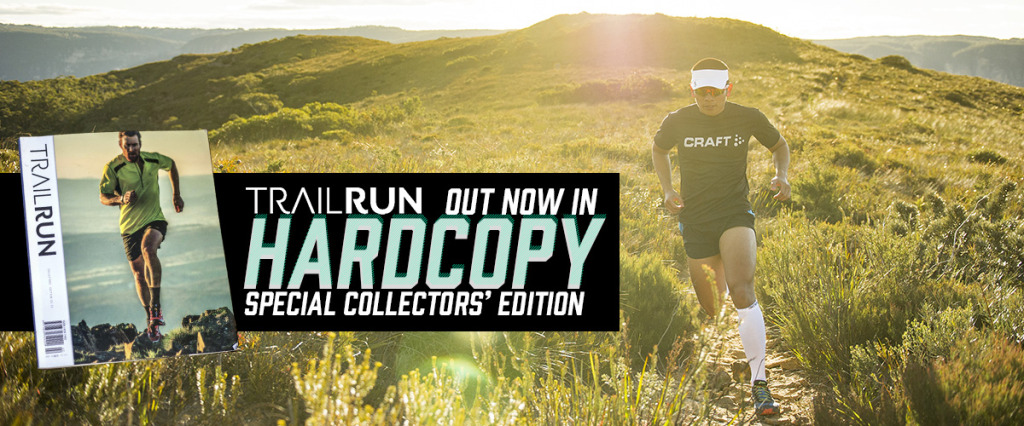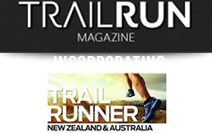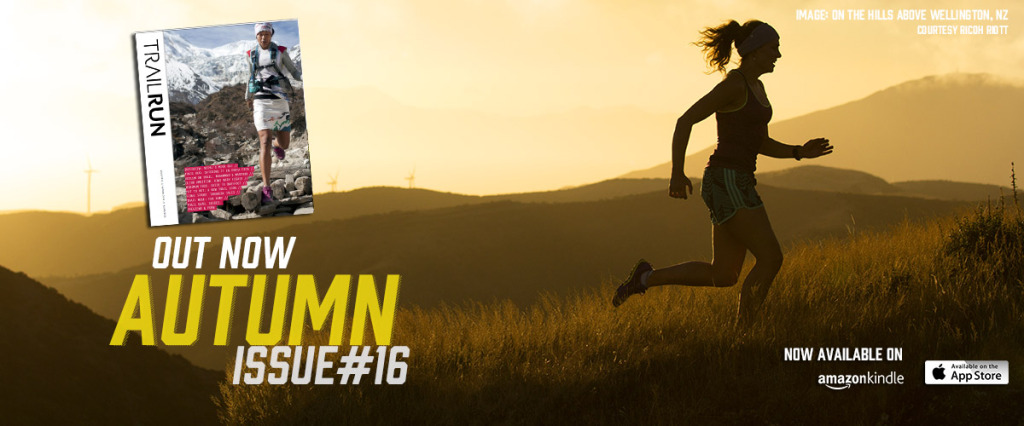Already one of Australia’s foremost adventurers and remote area outdoor event safety experts, Lucas Trihey is now staging the first National Trail Running Conference in May in the Blue Mountains. Trail Run Mag quizzed him about his latest big adventure. Interview: Dan Lewis.
SO TELL US, WHO IS LUCAS TRIHEY?
I’ve spent 30 years working in adventure. I’ve worked as a climbing and expedition guide and spent six years editing and publishing outdoor and adventure magazines. I’ve climbed new routes on cliffs and mountains all around the world and in 2004 I changed tack to explore Australia’s deserts and lead expeditions and small groups in the arid parts of Australia.
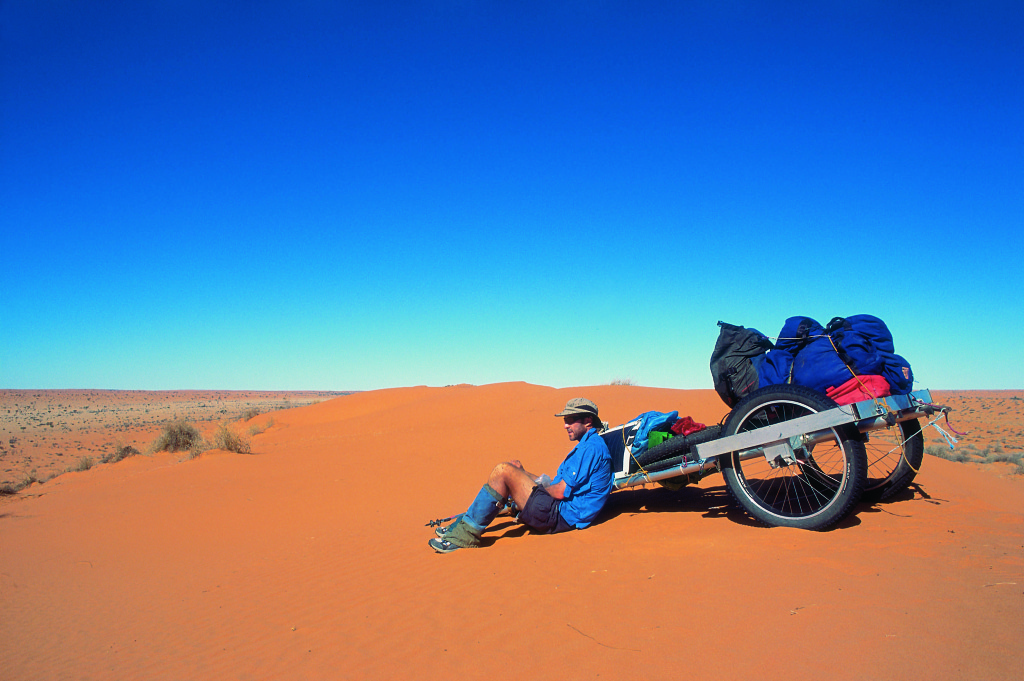
Lucas on one of his many epic adventures.
TELL US ABOUT SOME OF YOUR GREATEST ADVENTURES
My most precious memories are the more unusual and remote expeditions.
The Mt Chongtar expedition in 1994 in the Himalayas was as part of a team of just three climbers without sherpas or porters. We had good conditions and weather and pulled off the first ascent of the massive mountain – at 7400m it was the highest unclimbed mountain on earth at the time. My favourites was my 17-day, 400km solo trek across the SImpson Desert in 2006. I pulled a cart that weighed 160kg and I loved the solitude, the desert sky, the vastness of the landscape and not seeing any sign of other humans for so long. Being alone is a rare experience these days. I feel very priveledged to have had 17 days in such a wild place.
WHAT HAS BEEN YOUR MOST EXTREME WILDERNESS SURVIVAL SITUATION?
In January 2000 I pioneered a 30-pitch rock and ice climb on Mt Scott North in Antarctica. This was a beautiful and technical climb and it almost became my tombstone. Half way up my climbing partner dislodged a small loose rock that knocked into a bigger rock, and then due to a nasty chain of collisions an even bigger rock was heading straight at me. I was tied to a belay ledge and couldn’t move as this wheely-bin-sized boulder hurtled straight at me. With nowhere to go I pressed against the rock and waited for the killer blow. Amid a thundering of rocks, sparks and dust I was pummelled and battered leading to a cracked helmet, a bloodied finger and cut ropes but miraculously alive. Smaller rocks had hit me but the bigger evil one must have bounced right over me. We carried on up the climb chastened and wary. The steep ice pitches near the top were some of the most beautiful climbing I’ve ever done but I had a deep weariness from the near-death experience lower down and I was relieved to be finally on top.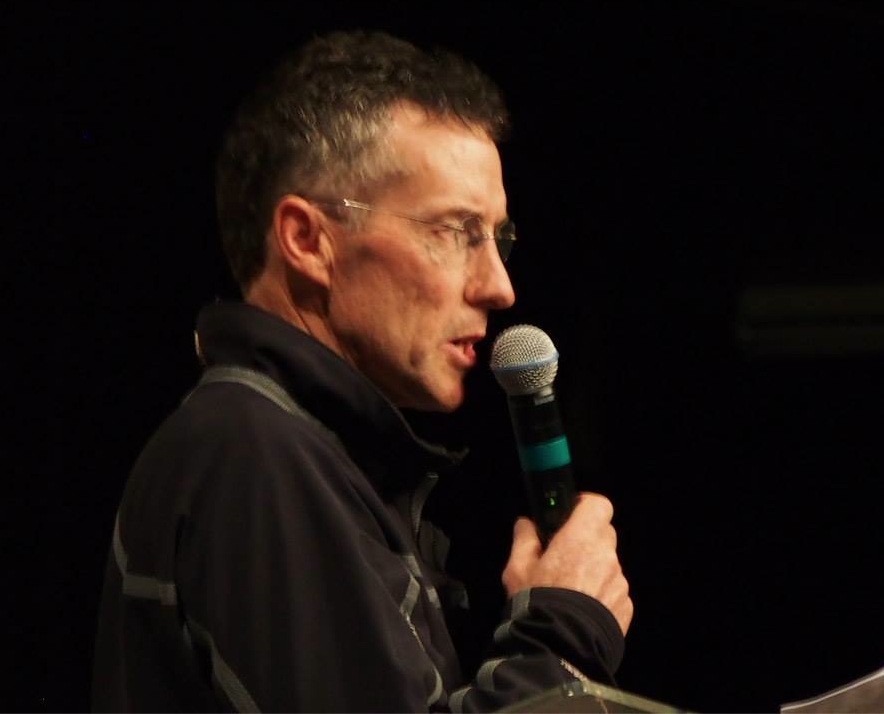
WHAT HAVE YOUR ADVENTURES TAUGHT YOU ABOUT OUTDOOR SURVIVAL?
To be humble. Nature is so much more powerful than us puny humans. We venture out there for fun and to learn about ourselves but never to conquer. Nature can swot us down like a fly if she cares to.
HOW DID YOUR ADVENTURING EVOLVE INTO A CAREER IN OUTDOOR EVENT MANAGMENT AND SAFETY?
My personal climbs and expeditions led me into guiding and adventure photo-journalism. This led to a bit of a profile in the adventure world that then took me into support work for other people’s expeditions and working with film crews in wild places. And that in turn introduced me to adventure racing. In 1997 I was asked to form the Australian climbing and safety team for the Australian Eco-Challenge in Cairns. This massive event was a real eye-opener with internatonal crew and teams, millions spent on logistics, vehicles, film crews and all the rest. That experience then led to enquiry for support services for other events. At Eco-Challenge I also met Tom Landon-Smith and Alina McMaster for the first time and years later that led to our relationship working together at The North Face 100.
TELL US ABOUT YOUR BUSINESS, EVENT SAFETY SEVICES
I had been trading for 15 years supporting events under my own name and lots of clients would say “what’s your business name” and I’d say I just trade under my own name. Finally Sean and Mel from Mountain Sports told me I had to get my act together and formalise the business so I came up with the name and haven’t looked back since (thanks guys!). It was a surprise to me how much of a difference it made to have a business identifty and how it led to other work and more job offers. So here we are with an awesome little team working for me now and more interesting jobs coming in all the time as we meet more event organisers. And the business is expanding to cover mapping (paper and electronic), risk management consulting and the safety plans that have become a critical part of how event organisers plan to keep the runners safe and well. I love the challenges of helping event organisers to stage events in wild places. It’s a fun business.
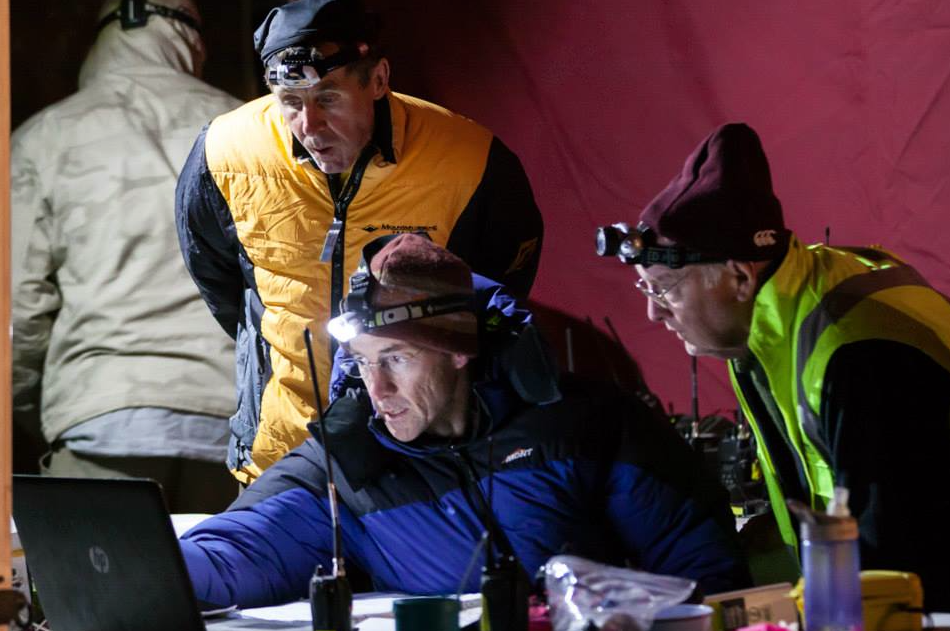 HOW DID YOU GET INVOLVED IN TRAIL RUNNING EVENTS?
HOW DID YOU GET INVOLVED IN TRAIL RUNNING EVENTS?
It started when I worked on the Eco-Challenge in 1997 in Cairns and gradually morphed into a lot of my work supporting trail events. The big year for trail events was 2008 when both Wild Endurance and The North Face 100 started up and my business did the first aid and safety for both events. After that more and more trail events popped up and we started working on a few of them.
WHAT ARE THE TRAIL RUNNING EVENTS YOU HAVE BEEN INVOLVED WITH?
Wild Endurance, The North Face 100, Glow Worm Tunnel Marathon, Buffalo Stampede, the Running Wild NSW series, Sydney Trail Series, Kanangra Classic, Coastrek and a few smaller events. We are also helping plan some new events this year including the Hounslow Classic and the Mt Barney Sky Runs. I also work on the Big Red Run, a six-day, 250km stage race in the Simpson Desert and the Burke and Wills Trek, an 11-day trek that covers 330km of remote outback.
WITH A MAJOR EVENT LIKE THE NORTH FACE 100, WHAT ARE YOUR MAJOR CHALLNGES AND GOALS?
We are very focussed on looking after the runners. With race Director Tom Landon Smith we spend a lot of time planning preventative measures, fine tuning the route, reviewing the mandatory gear and planning in detail the medical teams. As TNF100 has grown it’s brought its own challenges. It seems to be attracting a slightly less experienced group of runners and some years we see of lot of unnecesary illness caused by rookie mistakes with nutrition, hydration. We also see a lot of runners not understanding their limits and pushing to exhaustion and collapse. Our focus has been to both educate them (and Tom has been very supportive) and to monitor runners at the checkpoints so we can catch the really sick ones before they head into the Kedumba Valley, which is cold, dark and hard to get out of.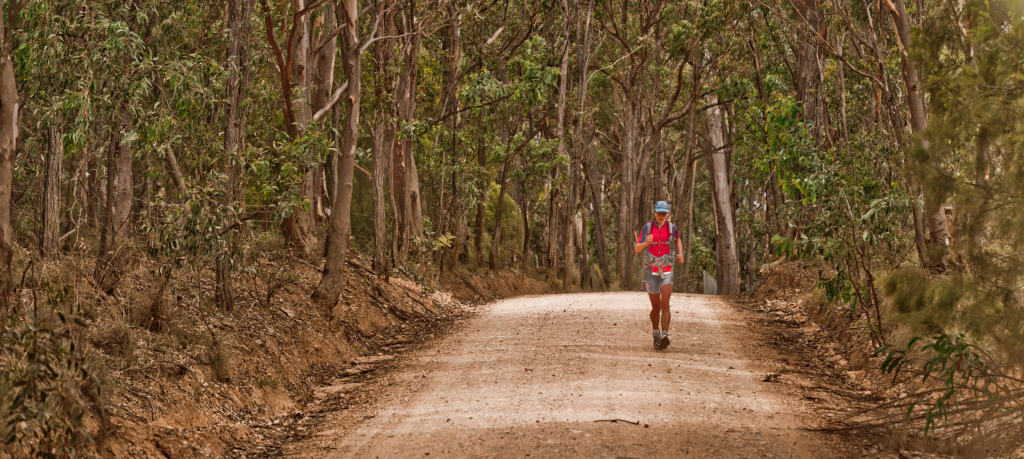
WHAT ARE THE MAIN DANGERS RUNNERS FACE AND WHAT DO YOU DO AS SAFETY DIRECTOR TO MINIMISE THOSE DANGERS?
Over-hydration is consistently a problem and in recent years we’ve seen way too many runners falling ill with it. Typically we see about eight times as many runners get sick due to over-hydrating compared to a dehydration. At events overseas runners are dying from over-hydration and I think it’s important that we send strong message to runners, especially new runners, that they should only drink if they are thirsty. In an average year just at the events I work on we send 10 to 15 people to hospital with moderate to serious hyponatraemia caused by drinking too much.
The other things at races that are a serious danger to runners are heart issues and this is a bit more of a lottery. If runners haven’t been ill most won’t have done an ECG test so if they have a heart condition it may remain undiagnosed until they push hard on a big race. There’s nothing much we can do about those except to have defibs around the course and to have staff who can do good CPR.
TELL US ABOUT YOUR MOST MEMORABLE INCIDENTS AT TRAIL RUNNING EVENTS
The most special things I see at trail events is when me and my staff help someone to achieve a special goal. While it’s always eye opening to see the performances that the elites pull off (watching North Face winners over the years has been amazing!) it’s powerful and emotional to watch some of the middle-of-the-pack runners to pull off a lifetime dream. We’ve had some pretty ill people at Checkpoint 5 at North Face who we’ve nursed back to reasonable health who have finished in good style.
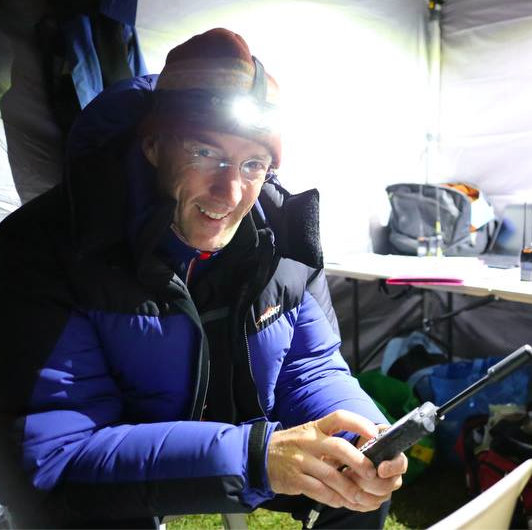 YOU HAVE ORGANISED THE FIRST EVER AUSTRALIAN NATIONAL TRAIL RUNNING CONFERENCE TO BE HELD IN THE BLUE MOUNTAINS THIS MAY, JUST PRIOR TO TNF100. WHAT INSPIRED IT?
YOU HAVE ORGANISED THE FIRST EVER AUSTRALIAN NATIONAL TRAIL RUNNING CONFERENCE TO BE HELD IN THE BLUE MOUNTAINS THIS MAY, JUST PRIOR TO TNF100. WHAT INSPIRED IT?
I’ve seen so many events now and tens of thousands of runners that I’m starting to get a feel for what they want to know and what they like about running trails. So the motivation for NTRC was really to stage something to help people realise their dreams. Let’s expose them to some inspiring elite athletes and coaches, give them good quality information and well researched and sound guidance on nutrition, hydration, training, the mental aspects of trail runs and how to get the best from their body and mind to help them perform.
TELL US ABOUT THE SPEAKERS
We are so lucky that we have access to so many elite athletes and coaches that the line-up is stunning. Dr Marty Hoffman from the USA is the world’s leading authority on the health aspects of ultras while Brendan Davies and Hanny Allston are both solid, world-class athletes. They are also great communicators. Andy DuBois is a massively respected coach, Jo Brischetto is an amazing athlete who came out of nowhere a few years ago to become a dominant athlete. Jo’s great passion goes beyond her own running – she’s an active leader in the trail running community, started Summit Sisters and Trail Kids and is an inspiration to many runners. We also have some “wise elders” in the mix including Sean Greenhill who was involved in the early days of Fatass, Running Wild and 16 Six Foot Tracks! Andy Hewat is race director for Bogong to Hotham and we have Alina McMaster and Tom Landon-Smith from AROC with a lifetime of podiums in adventure Racing, Rogaining and staging successful North Face 100s since 2008.
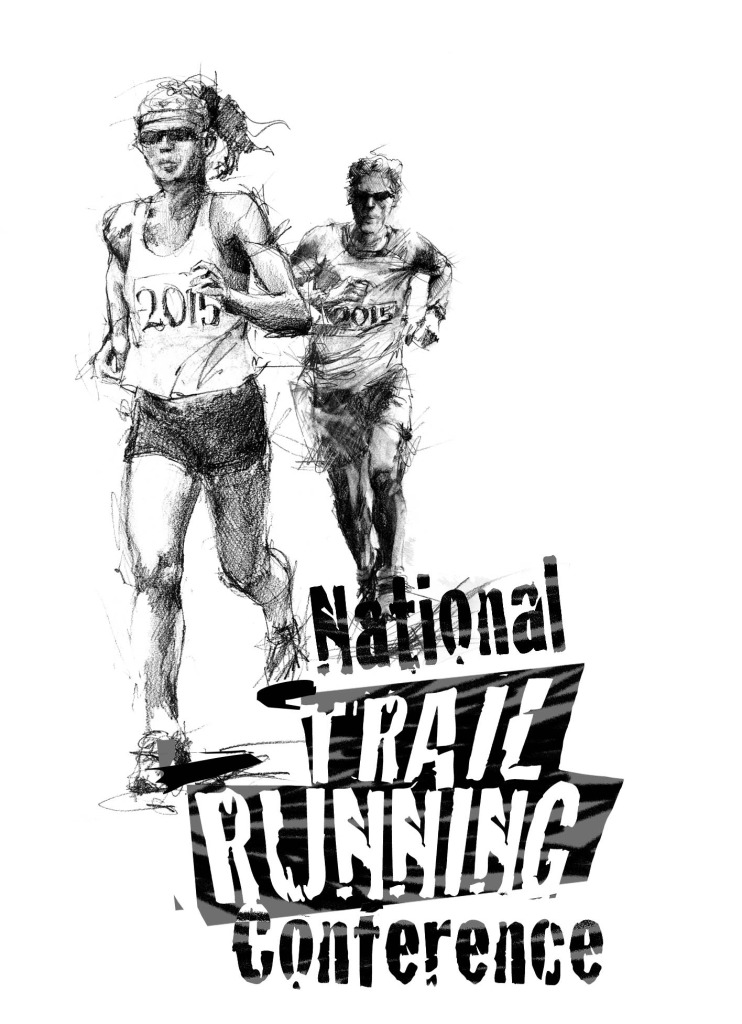 WHO IS THE CONFERENCE FOR?
WHO IS THE CONFERENCE FOR?
The Conference is for all trail runners. There’s a mix of information for entry level runners as well as lots of more advanced sessions for more experienced runners. The structure is a mix of short presentatons by our experts followed by discussion and Q&A sessions to share ideas and knowledge. There are also some very experienced runners among the delegates which will lead to some great exchanges.
WHAT DO YOU HOPE IT WILL ACHIEVE?
I’m hoping we’ll energise the trail community through a spirit of sharing of information and experiences. My co-organiser Dr Ursula King is experienced with staging conferences and in presenting information in a way that stays with the audience so I’m confident the sessions will be stimulating and helpful.
DO YOU HOPE THE CONFERENCE WILL BECOME A REGULAR EVENT?
Yes, we’ll be putting it on every year in the week before The North Face 100.
WHAT DO YOU THINK OF THE WAY THE TRAIL RUNNING SCENE IN GENERAL HANDLES SAFETY AND MEDICAL CARE? ARE RACE DIRECTORS KNOWLEDGABLE ENOUGH? ARE THEY DOING THE RIGHTS THINGS WHEN IT COMES TO MEDICAL SUPPORT?
I’m seeing a genuine desire among race directors to move with the times and keep improving the organisation at trail runs. I’m seeing more and more events every year which have made it a priority to invest in improving systems for things like runner tracking, medical and first aid services, better maps and safety planning.
Trail running is similar to a lot of developing sports in that there’s a mix of people organising events. While there are lots of experienced organisers there are also less experienced organisers but a common thread among all the events I see is that everyone seems keen to develop and improve. The trail community is very vibrant and active. I guess it shouldn’t be surprising when so many of the people organising events are passionate runners themselves.
ARE THERE ANY THINGS YOU WOULD LIKE TO SEE CHANGE IN THE TRAIL RUNNING SCENE?
The things that sometimes worry me are mostly educational issues (like so many runners getting ill due to hyponatraemia or taking too many tablets) and the word is getting out so as long as the opinion leaders help us to get good information out there I’m confident we’ll see a better understanding of these health issues over the next couple of years. Hopfeully the conference can help a little with this as well.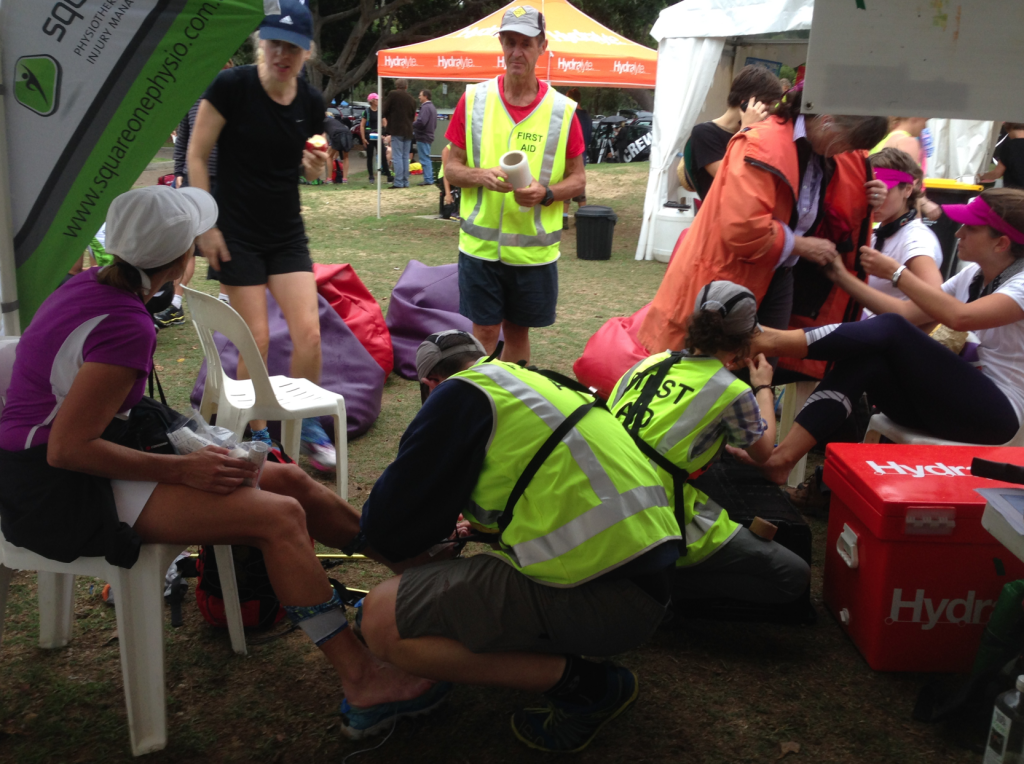
TELL US ABOUT THE LATEST DEVELOPMENTS IN OUTDOOR EVENT SAFETY AND ENDURANCE MEDICINE
The “industry best” standards in the outdoor industry (guiding etc) have a lot of promise to help the fledgling trail running community. Some of these include good expedition planning documents that serve the same function as running event safety plans. Events with hundreds of runners need good plans to avoid messing up, losing runners or to respond when a runner gets sick. Running events also need to collect medical background questions for all runners and I see this happening at most of the events I work on now. It’s relatively easy to collect this data as part of the registration process, which is a good development. That information is gold if a runner gets sick and I’ve seen with my own eyes how such information can save lives due to quicker and more appropriate medical responses to peculiar ailments.
YOU HAVE DEVELOPED A NEW ELECTRONIC MEDICAL RECORDS SYSTEM THAT YOU HOPE TO TRIAL AT TNF100. WHAT’S IT ALL ABOUT?
Paper based systems have major limitations – mostly to do with it being difficult to share with other members of the event medical and first aid staff. So if a runner sees our medics at an early Checkpoint it’s time-consuming to get the details in front of the doctor at the finish. Our electronic system means any data entered into a patient’s record anywhere on the course is automatically live for all users across the event. We can also take photos and insert them into the runner’s record so for example a doctor might be able to give the medics on the scene better advice to cope with something unusual.
A big advantage of our electronic system is the the medical background data is available (behind a secure password-protected gateway) to the medics in the field. So if they find a sick runner they can immediately look up and check for allergies, previous illness, medications etc.
FOR A RUNNER ENTERING TNF100, WHAT WOULD BE YOUR KEY TIPS TO HELP THEM SAFELY COMPLETE THEIR 100KM RUN THROUGH THE BUE MOUNTAINS?
Preparation. Know your body, know your limits, don’t try new stuff on race day. Trial and test your nutrition, hydration and gear. Get advice from experienced coaches about a race plan.
WHAT ARE THE BEST AND WORST THINGS ABOUT BEING THE SAFETY/MEDICAL DIRECTOR AT A TRAIL RUNNING EVENT?
BEST: Seeing the inspiring performances by all the runners – the elites because they are so incredible and the rest because they are out there testing themselves to the limit, learning about themselvs and achieving things. They are all amazing.
WORST: Seeing too much unnecessary illness caused by poor planning and poor advice. Don’t pre-load with fluids or drink to a schedule – you’ll make yourself sick. Only drink if you are thirsty. Don’t take preventative anti-inflamatories, they will make you sick and there’s not even good medical evidence they help with pain or inflamation.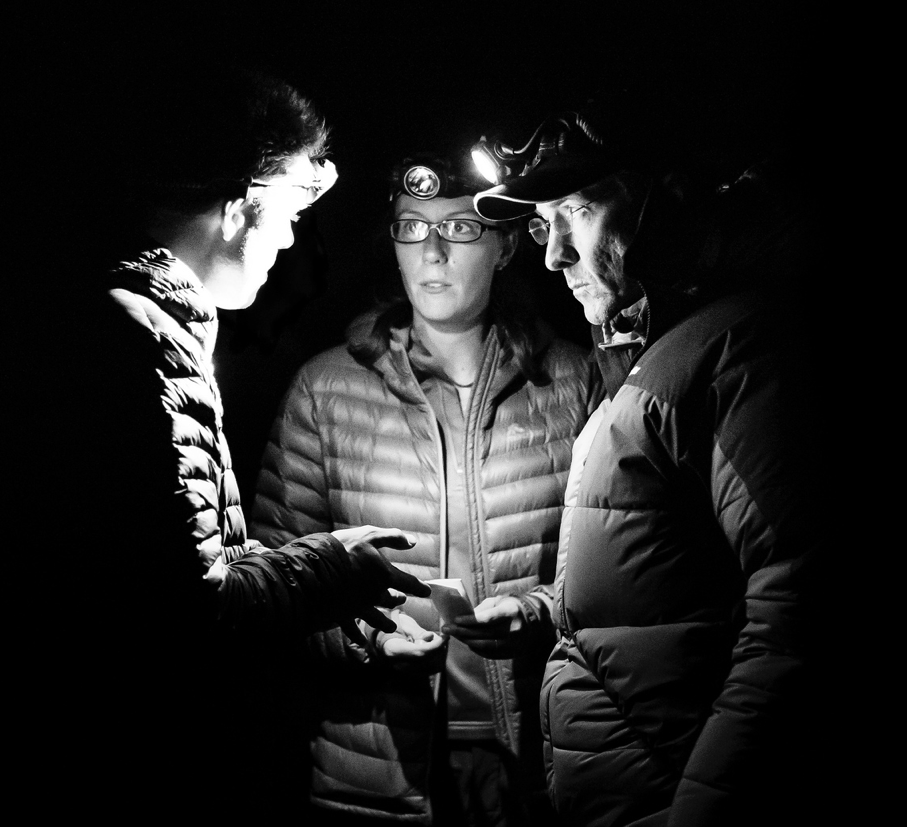
WHAT DOES THE FUTURE HOLD FOR LUCAS TRIHEY, EVENT SAFETY SERVICES AND TRAIL RUNNING?
I’m employing new staff as we take on more events and that’s exciting. My staff bring their own enthusiasm, specialties, interests and experience and it makes for a stimulating work environment to be constantly trying to improve our service and to help event organisers keep improving the events. Trail running is booming and I love to see that so many runners are being exposed to the beautiful natural places that I’ve been working in all my life.
HAVE YOU GOT ANY MORE EPIC ADVENTURES PLANNED?
The conference in May is my current “big adventure” – it has lots of challenges and excitement and the only thing wrong is that it requires too much office time for my liking. But hopefully like lots of challenges it will all be worthwhile on the day when we see all the delegates walk in and we get to meet them, talk with them and hear their own running stories.
Aside from that I’m trying to organise a summer trip to the Great Sandy and Gibson Deserts in northern WA. There are some extremely remote waterholes out there surrounded by hundreds of kilometres of sand and gibber plains. It will be really hot but I love the heat and it means we won’t be bothered by other travellers. And always in the back of my mind is another desert crossing on foot. The nights spent under the desert stars in 2006 in the Simpson are some of my most treasured memories … something to dream about.
BOOK YOUR SPOT AT THE CONFERENCE NOW: www.austntrc.org
DOWNLOAD THE LATEST EDITION OF TRAIL RUN MAG NOW (SHOWN ABOVE), FOR FREE HERE. OR GRAB A LUXURIOUS COFFE TABLE-STYLE HARDCOPY FROM OUR NEW SHOP.
